In honor of Financial Literacy Month this April, I’m featuring a fantastic financial literacy program in the form of an interactive curricula called the Earn Your Future Digital Lab. It’s presented by the PwC Charitable Foundation, which supports education and financial literacy. This comprehensive financial literacy program is designed for students in grades 3-12 to empower kids with real-world financial skills.

The program is categorized into levels:
- Level 1 is for grades 3-5
- Level 2 is for grades 6-8
- Level 3 is for grades 9-12
Currently, only Levels 2 and 3 (middle school and high school) are available but Level 1 modules are set to be launched in the fall, so if you teach upper elementary, keep this on your radar for integration next school year!
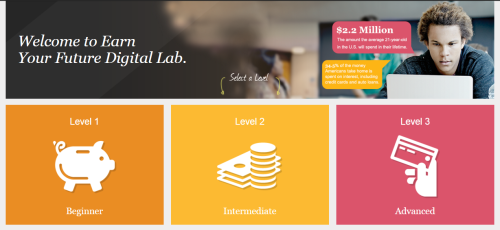
There are seven modules for middle school and eight for high school. I love how the modules’ titles double as the objective, so all it takes is one look to know what your students will be learning.
All the content is easy-to-learn, relatable, and aligned with Council for Economic Educators standards.
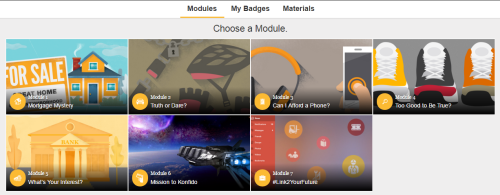
The lessons revolve around real-life financial challenges and pose equally realistic questions that will pique students’ interest so they want to learn more. The high school lessons (Level 3) are about applying for a credit card, investing, and learning about the stock market.
Level 2 (for middle school) has some great activities, too. For example, the lesson on mortgage starts with a presentation about a family who wishes to buy a house but has three different banks offering three different kinds of mortgages for the same price. The objective of the lesson is to find out which kind of mortgage will benefit the family the most, and frankly, it’s never too early to learn that!
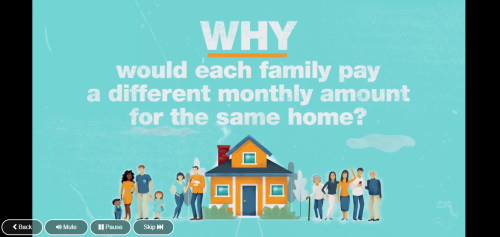
Another lesson on this level I really like (and that middle school students will truly relate to) is Can I Afford a Phone?
It’s a lesson on making smart purchases, studying phone plans, taking monthly bills into consideration, and saving money. This module could spark some great conversations about comparing phone companies and plans, and students may even want to research more options available to them in real life after the exercise.
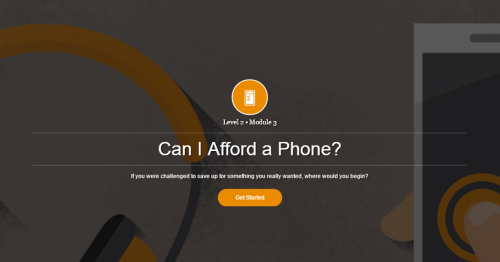
How the modules work
In every module, each lesson begins with a video that sets the dilemma or situation:
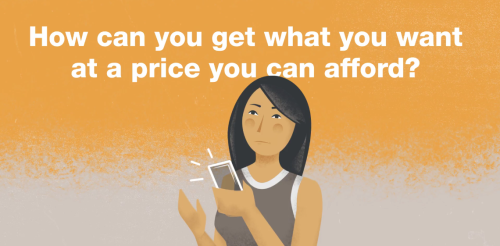
This is followed by a preliminary test that checks for prior knowledge and helps the teacher gauge the knowledge gaps that students need help with:

Next is the investigation, which is actually a series of video presentations that serve as the lesson. For example, in the mortgage lesson, the need for a down payment is explained along with other important vocabulary. Periodic comprehension checks are integrated:
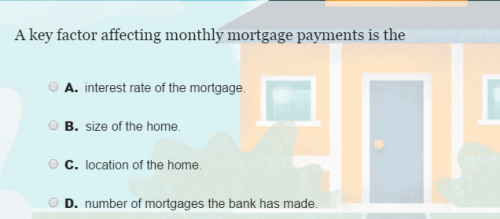
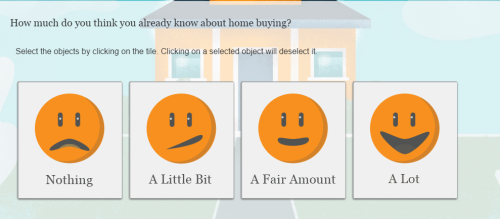
The next stage is the wrap up, which summarizes the entire lesson, followed by the final stage, which is the post test to check how much the students understand.
How to use this program with your students
The entire program is a self-paced course, meaning students can finish them at their own pace and stop whenever they need to in order to pick back up later. The ability to save progress is a great feature because you can pause the lesson if you feel that students need more instruction and you want to offer supplementary materials or related activities before they continue on.
All the modules are interactive. Students can complete the modules independently, or you can project the modules on your interactive whiteboard and guide students through it as part of your lesson.
You can check out the modules for yourself by signing up as a “teacher/family” here. Once you’ve familiarized yourself with the program, students can begin using it at any time.
Disclosure: This post is brought to you in partnership with PwC Charitable Foundation and WeAreTeachers. As always, I only agree to review tools that I would use myself in the classroom and would highly recommend to other teachers, as well.

Angela Watson
Founder and Writer
Sign up to get new Truth for Teachers articles in your inbox
OR

Join our
community
of educators
If you are a teacher who is interested in contributing to the Truth for Teachers website, please click here for more information.















